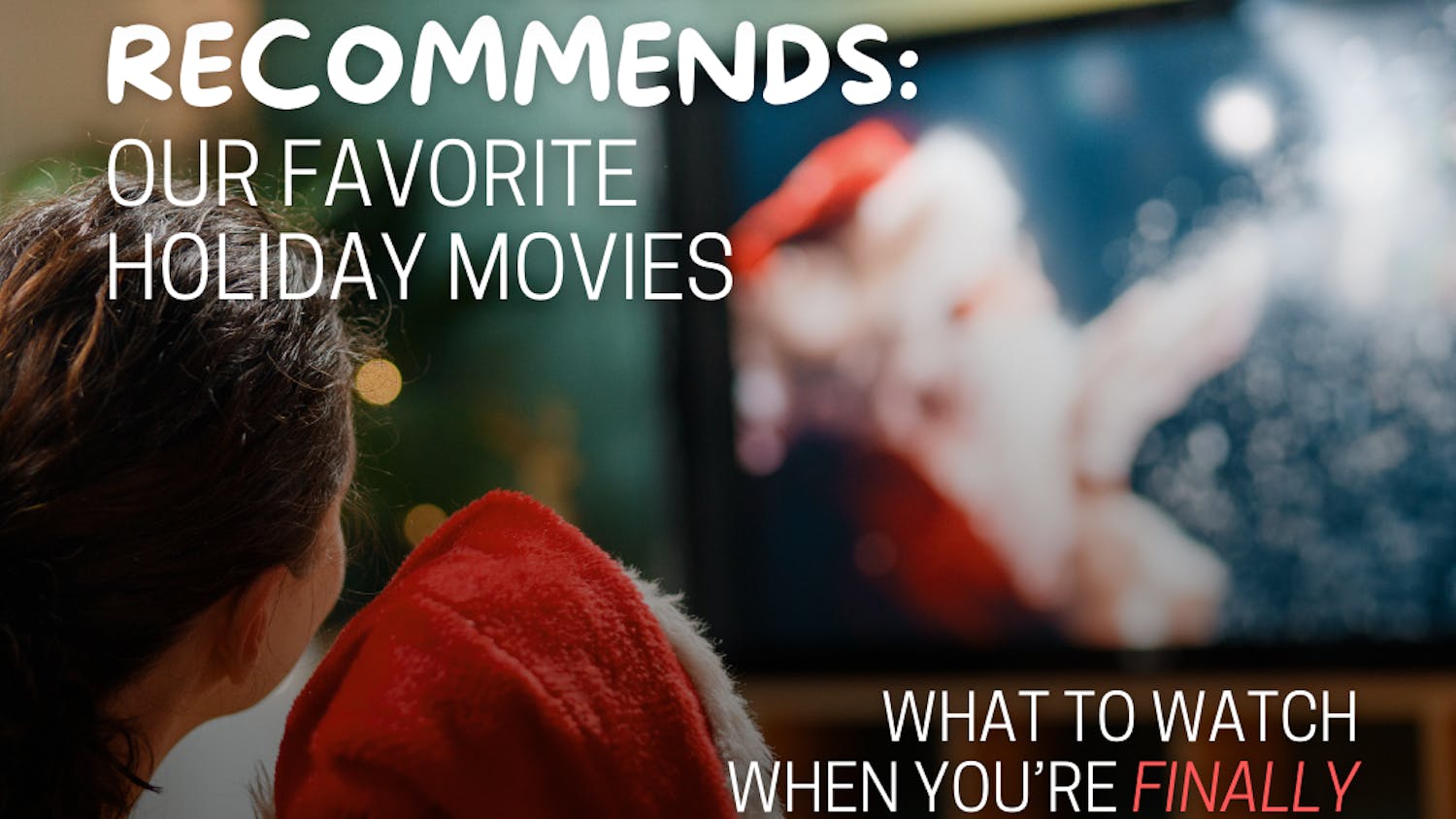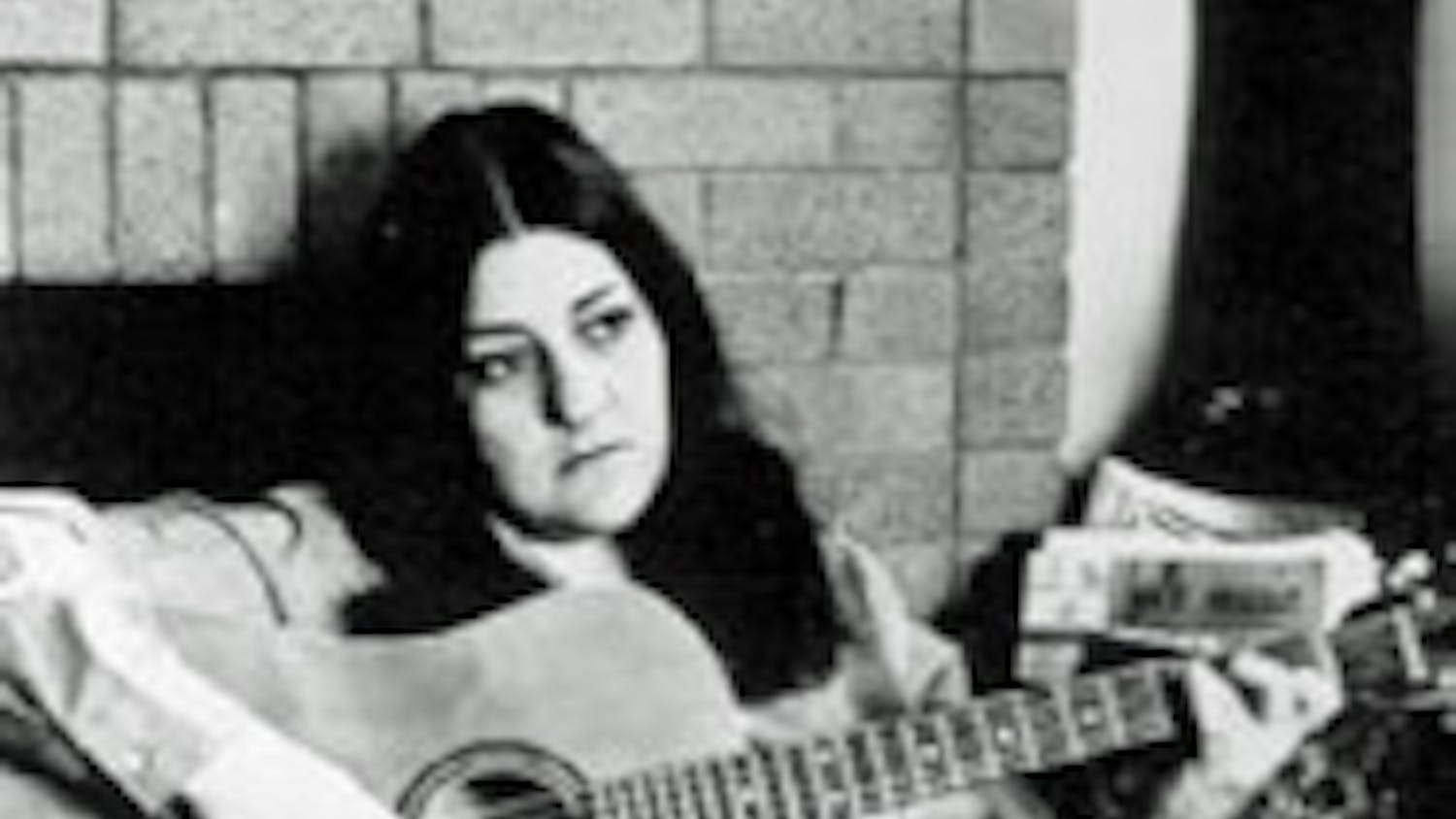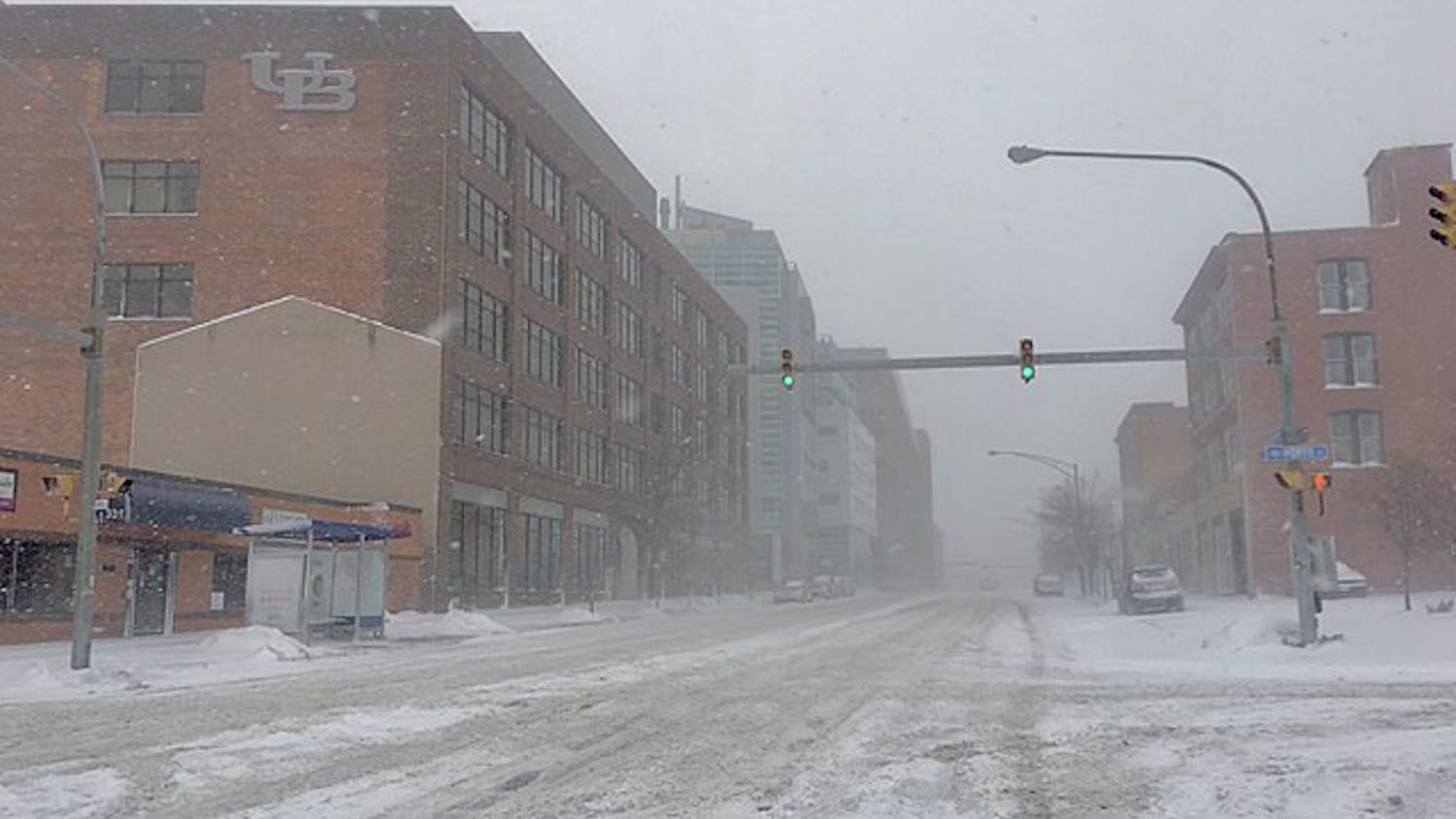When Jay Duarah returned home to Michigan for spring vacation his freshman year, his mother asked him a direct question: "Are you seeing someone?"
Duarah, an Indian immigrant, is the son of a diplomat. He never lies to his parents.
Remaining honest while deliberately vague and knowingly evasive, Duarah told his mother plainly, "Yes, I'm seeing someone."
His mother asked him for her name but he wanted no part of that discussion. The subject then shifted and the conversation carried on. But later in the evening, his mother asked another question: "Do you have a picture?"
"Yes, I do," he told her. She insisted that she see the face of the "lucky girl." She was persistent, and after much hesitancy, Duarah finally gave in; he showed his parents the picture.
"It's a he!" his mother bellowed.
The room went silent and descended into a terrifying awkwardness, Duarah said. It took a moment for the family to compute the information their son presented to them. His mother began to cry and his father remained silent.
The dinner then ended abruptly. They had each recognized in their own way that their lives had suddenly changed.
Today, Duarah's mother will ask him about his personal life occasionally, but his father never broaches the subject. "I will have to be the one to break that barrier," Duarah said.
Breaking barriers was the main focus of UB's Lesbian Gay Bisexual Transgender Queer Alliance (UB's LGBTQA) last week as they celebrated National Coming Out Week.
Duarah, who is now a first-year electrical engineering graduate student, credits having an LGBTQ community at UB to surmount the strain he experienced in coming out to his parents. Last week's events were designed to provide an outlet to more students on campus with experiences similar to Duarah's.
Members held an amateur drag show in the Student Union on Tuesday and a color run on the field next to the Center For the Arts on Friday, where they threw cups of colored cornstarch on each other to highlight their identities and raise awareness for both their club and the cause.
Allie Balmer, a senior anthropology major and member of the club, noted the symbolic significance of the color run. "The event is basically about getting people to come together, and obviously the gay pride flag is the rainbow colors," she said. "That was the whole idea. That's the main association."
Jham Valenzuela, president of UB LGBTQA, organized the event. Since he has taken the top leadership position, he has changed the club - making the meetings more discussion-based, aimed at establishing a stronger sense of community.
Some have taken issue with his method, however, claiming he has made the club too much an extension of Wellness Services.
"The problem with this is, one we already have that organization on campus and two the purpose of this club is to be a social organization," said a member, who asked to remain anonymous, in an email.
But Valenzuela cites these alterations in the club's structure as vital to the expansion and growth it has experienced this semester.
In the 2012-13 academic year, the weekly meetings averaged around 15 people. Now, they average over 40.
Every Monday, the group holds a meeting centered on dialogue. The discussions are led and moderated by Valenzuela and Vice President Laura Borschel, a senior English major.
Some meetings have erupted in vehement disagreement - like when they discussed whether Straight Allies should be considered a part of the LGBTQ community. Even when tensions flare, however, the club has maintained a level of camaraderie and cohesiveness that many members say is critical to their ability to live as LGBTQ in Buffalo.
Club members are encouraged to share their experiences in the group setting, and each meeting becomes a portal into an underlying question of what it means to be LGBTQ here, at UB, now.
***
Before the meeting starts, the room is a hubbub of overlapping dialogue with discordant voices wandering the air. When Valenzuela begins the meeting, a sense of seriousness overtakes the atmosphere.
The club sits in an open circle. Valenzuela and Borschel introduce the week's topic before the students introduce themselves; they list their name, major, PGP (preferred gender pronoun) and anything additional pertaining to how they identify themselves.
On Sept. 23, the meeting's theme was identity. When Valenzuela announced the subject that evening, he proposed that it be considered under the theoretical notion that, "My experience is unique; it can't be found elsewhere."
In a room full of students with different experiences, the goal was for everyone to share them, so that these differing experiences become shared experiences, according to Borschel.
The club is noted for its ethnic diversity and it is evenly split between genders. When Valenzuela asked club members to include something they indentify themselves as, the responses were as multifarious as they were unique. They included: a feminist, artist, southerner, writer, history buff, geek, cuddle monster, filmmaker, break-dancer, Canadian, angry feminist, Bills fan and New Yorker.
When one club member said he was "a Kansan," another student, startled with unbridled surprise, howled, "You're not in Kansas anymore."
It took over 45 minutes in that meeting for sexual orientation to even be mentioned. The purpose of getting members to discuss other forms of identity, Valenzuela said, was to inform each other how various identities shape their communities.
They waited until the very end to address being LGBTQ. Valenzuela noted how "lesbians, gays and [bisexuals] experience the world differently." The conversation was planned to show how regardless of how different they all are, they have all been lumped together in one category as LGBTQ.
The members, however, do not all identify as LGBTQ. There are several straight allies in the club, like Gabriel Caladozo, a freshman computer science and engineering major.
"A straight ally is someone who is for the gay rights campaign, who is not closed-minded, is open-minded, is open to everyone," he said. "I don't really see people as being gay or as being straight. I just see people as people."
***
On Sept. 30, the meeting's theme was "coming out." Each member was encouraged to share their own stories, and the struggles that accompanied the process.
Borschel began by elucidating how an internal process had to take place before she could actually inform family and friends of her sexual orientation.
"I think the first critical thing that people don't realize is that before you come out to people, you have to come out to yourself," she said. "For me, it took a really long time to come to terms with the fact that I was gay. It took me about two years to process, and I came out when I was in high school."
While in high school, she was embedded in an environment that was not conducive to her sexual orientation. Growing up in Alden, N.Y., a rural town on the northeast border of Erie County, Borschel felt alienated.
"The town I grew up in was very small-towny, very Republican, very hickish," she said. "Just not a good place for that type of stuff."
Her high school didn't even have a Gay-Straight Alliance (GSA) - what is now considered the main support group that most high schools are supposed to facilitate.
"All spaces are designated straight spaces; I don't know if people ever think about that," Valenzuela said. "It's one of the privileges of being straight. Every space is a designated straight space unless you go into a space that is queer, because in that space, the assumption is that everyone in there is queer."
He learned that when he stepped into his first GSA meeting. This induced him to get involved, which later led him to a place where he was comfortable embracing his identity and sexual orientation.
"It shows how spaces really mold desire," he said.
For Borschel, it was the prospect of escaping her hometown that suggested a sense of possibility.
"What really pushed me to come out was this promise of going to college," she said. "Because I could be whoever I wanted to be in college and I didn't want to start off being somebody that I wasn't."
Borschel recalled she first came out to a person via text. "I was sobbing and crying and it was really emotional," she said.
She now considers the experience transformative - enabling her to move forward with her life and begin the process of establishing who she was going to be.
When her friends and family accepted her, she felt a strong sense of relief. "It took a very long time for me to get to a place where I could be proud of my sexuality," she said.
***
"Having a positive coming-out experience is a huge privilege," Valenzuela said. "Because having a negative coming-out experience can scar you for life."
"Some people even kill themselves over it," Borschel added.
A study conducted in 2011 revealed 21.5 percent of gay, lesbian or bisexual teens reported attempting suicide while 4.2 percent of straight kids reported the same, according to the Human Rights Campaign.
And 62 percent of homeless, queer youth successfully complete suicide, according to the National Coalition for the Homeless.
Both Valenzuela and Borschel know people who have been rendered homeless after coming out to their parents. They have seen the damaging impact such an event can have on a young person's life.
"I had a friend in high school," Borschel said. "He was the only out kid and his mom kicked him out."
Being on the street, one becomes more susceptible to violent crime, which is widespread within the LGBTQ community in Buffalo - more so than many may realize, according to members of the club.
"We have friends who have been hate-crimed," Borschel said. "We have friends who have been at fraternities and have been talking about how hot some guy was and he got the s*** kicked out of him."
"Here at UB," she added.
Borschel, who identified herself appearing as a "twinkie boy," said the risk of violence is "compounded further the more trans you look or the more androgynous you look."
"When I go to bars, I get confused for a gay boy all the time," she said. "It's really funny, but it's also really terrible."
Valenzuela and Borschel added that men have had violent reactions to discovering she is a girl - like a time in a gay bar when a male approached her.
"I had one dude one time who said, 'I just want to [expletive] the [expletive] out of you' and I was just like, 'Oh, no thank you, I'm a girl,' and he just got in my face," Borschel said. "It was really, really frightening."
Episodes like this are a stark reminder for the LGBTQ community of a misconception widely pervasive - that they are all in the same struggle together. As Valenzuela noted, "A lot of people in the LGBTQ community are at a higher risk of violence" - particularly when females present as males, he said.
And Borschel has experienced the pangs of bigotry due to her appearance throughout her life. "I have been walking down streets and people will shout things," she said. "It happens."
But through UB's LGBTQA, she has had an outlet to help her work through the turmoil; she has a network of support that she benefits from and extends to others.
***
Coming out, societal and familial acceptance and the risk of violence from strangers are among the day-to-day concerns of an LGBTQ person. But on Monday nights, as the club sits in its circle, they talk about it all. And just by doing so, a sense of community and belonging has manifested.
It has been nearly four years since Jay Duarah came out to his parents. When he came to UB his freshman year, he had an opportunity, like every other college student, to find himself. His involvement with the club has been the space for him to be who he wants to be.
The club made it its mission last week to spread its message that it is here to help students with the process of coming out; but its existence is to serve an even larger purpose - to be a home for LGBTQ students, no matter where they are in life.
The students who have been through the process know how to help those who are struggling with it presently.
Borschel remembers the response she received from her parents:
"When I ended up telling my parents, my mom was very upset, but my dad just laughed and said, 'Well, Laura, you could grow up to want to be a tree or a rock and I wouldn't care.'"
As new students come to each meeting, Borschel and Valenzuela make it clear they don't care if they are an artist or a southerner, a history buff or a break-dancer - they are welcome.
email: features@ubspectrum.com





